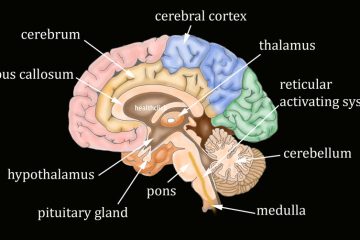Is Cancer Related Fatigue a Real Problem?
Cancer-related fatigue is a common and debilitating symptom experienced by cancer patients, affecting individuals daily life and treatment. Unlike typical tiredness, CRF is persistent, overwhelming, and not relieved by rest or sleep. It can significantly impact daily functioning, making routine activities like working, socializing, or even performing basic self-care tasks challenging. The fatigue associated with cancer is often accompanied by other symptoms, such as pain, depression, and sleep disturbances, which compound its effects. CRF can diminish a person’s quality of life, as it may lead to emotional distress, social isolation, and a reduced ability to enjoy once-pleasurable activities. Despite its prevalence, cancer-related fatigue is often under-recognized and under-treated, making it essential for healthcare providers to address it comprehensively, considering the physical, emotional, and psychological aspects of care.
How Can Physical and Occupational Therapy Help with Cancer Related Fatigue?
Physical and Occupational therapy can significantly impact managing cancer-related fatigue by improving physical function, reducing symptoms, and enhancing overall well-being. Regular, tailored exercise programs designed by physical therapists can help increase energy levels, strengthen muscles, and improve cardiovascular health, all of which counteract the debilitating effects of fatigue.
Multiple Myeloma and the relationship to Cancer Related Fatigue
Multiple myeloma, a type of blood cancer that affects plasma cells in the bone marrow, is closely associated with cancer-related fatigue (CRF), which can be one of its most challenging symptoms. Addressing fatigue in multiple myeloma often requires a multi-faceted approach that includes medical management of anemia or pain, psychological support, and physical rehabilitation.
Cancer-related fatigue is reported more frequently than any other symptom of cancer. It affects between 70 to 80 percent of cancer survivors somewhere in the continuum of their care.
When we address cancer-related fatigue, we discuss functional scales, METs, ratings of perceived exertion, and Borg’s Scale. We also discuss relating those tools to the gas tank analogy. For example, when you work with multiple myeloma patients, fatigue and pain are their number one complaints.
Multiple myeloma affects the bone marrow and almost all bones, mainly the axial skeleton, which includes the femur, humerus, ribs, pelvis, and spine. Patients are also very often on pain medications, which can further tire them out. Because their bones are so weak, they cannot do any loading, resistance torsion, or twisting activities or exercises.
Developing a program for dealing with cancer-related fatigue is difficult. One example of a rehab program that I utilize (after an individualized evaluation):
1. Begin the patient on interval training.
2. Start on the treadmill, even if that’s three to five minutes; that is a good start.
3. Assess how long of a rest break they need and where they are regarding exertion.
- Ask them about the gas tank analogy. “Are you at a quarter tank? It would be best if you didn’t get below a quarter tank.
- What is your MET? What is that equivalent? The amount of energy it takes you to do that task.”
How to Progress?
Then, we will move on to the next piece of equipment, the recumbent bike or the elliptical. We will take them through and gradually increase the time they’re on the exercise equipment and decrease the rest they need over time. These are the main areas that you’re focusing on in your treatment program.
Get Access to A Comprehensive Library of Cancer Rehab Courses

For a comprehensive evaluation and treatment approach for vestibular and balance disorders, go to https://www.healthclick.com/physical-therapy-continuing-education.php and utilize the resources provided in the Balance and Falls Series of comprehensive courses within the All-Access Healthclick Subscription. Some of the courses in this series are:
Courses that Can Assist You with Your Cancer Rehab Program
The Fundamentals of Lymphedema
Maximizing Post-Surgical Outcomes in Cancer Rehabilitation
References
Fabi, A., et al. “Cancer-related fatigue: ESMO Clinical Practice Guidelines for diagnosis and treatment.” Annals of Oncology 31.6 (2020): 713-723.
Fernandez-Rodriguez, Eduardo J., et al. “Multimodal physical exercise and functional rehabilitation program in oncological patients with cancer-related fatigue—A randomized clinical trial.” International Journal of Environmental Research and Public Health 20.6 (2023): 4938.
Harrington, Shana E., et al. “Knowledge regarding cancer-related fatigue: a survey of physical therapists and individuals diagnosed with cancer.” Physiotherapy Theory and Practice 39.9 (2023): 1964-1973.


